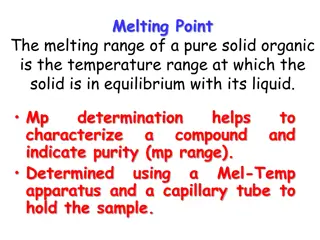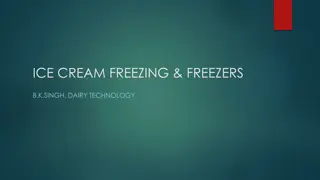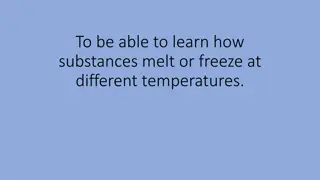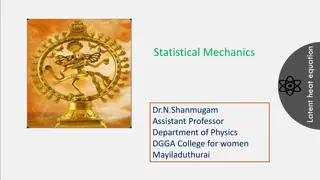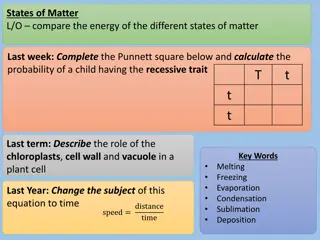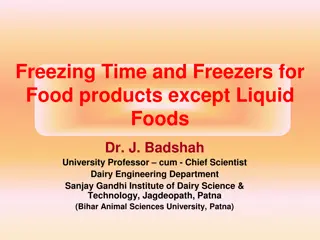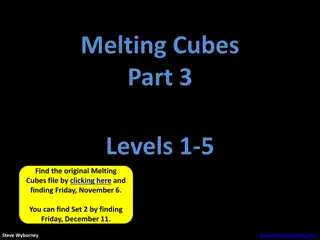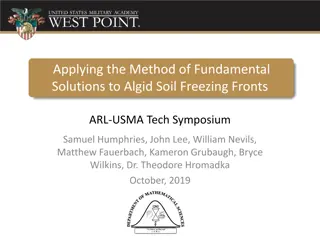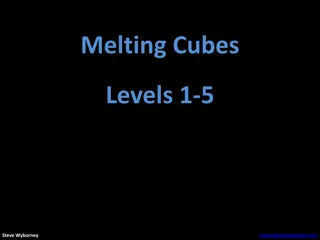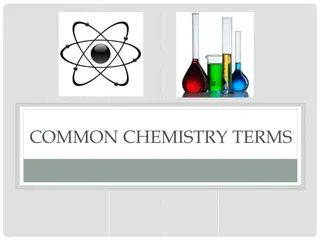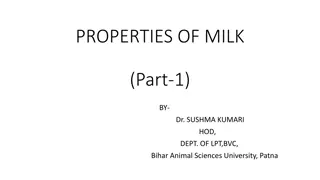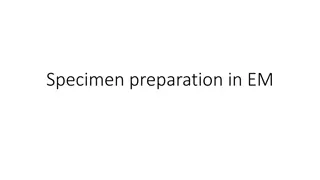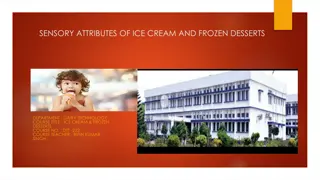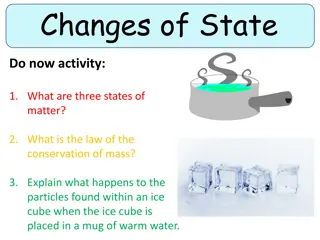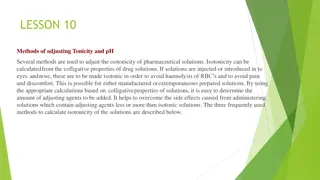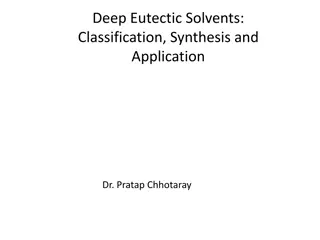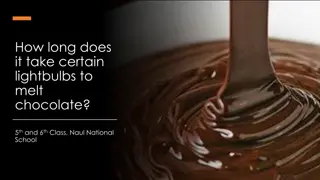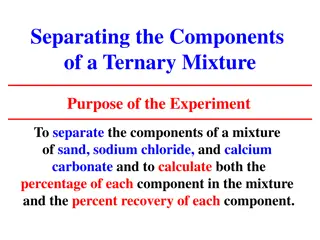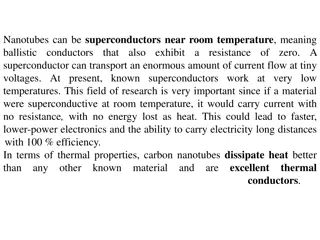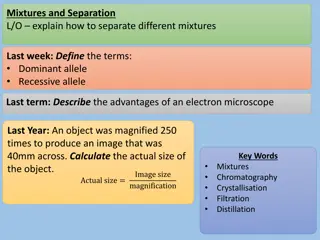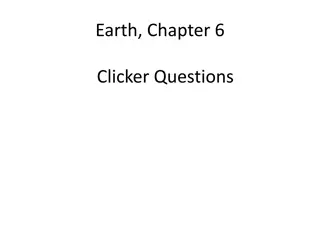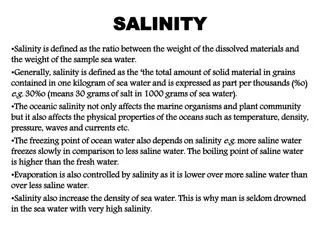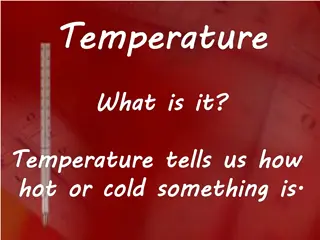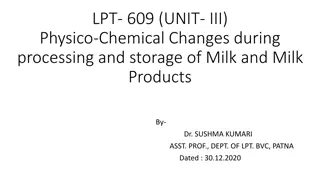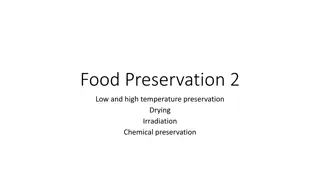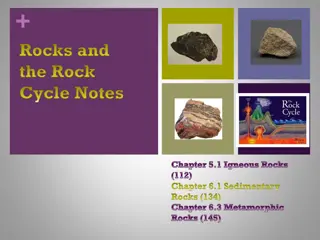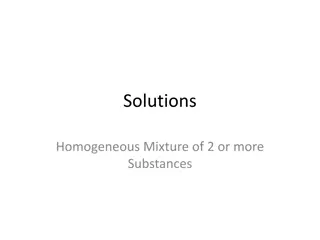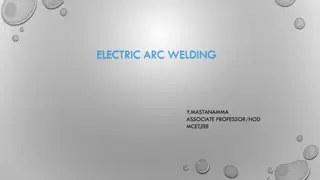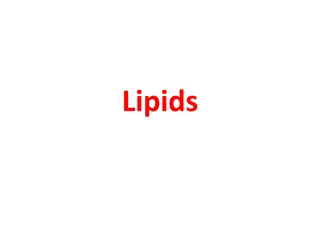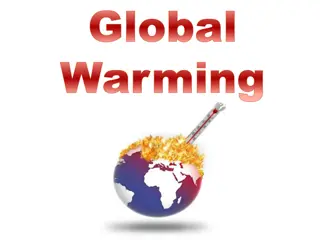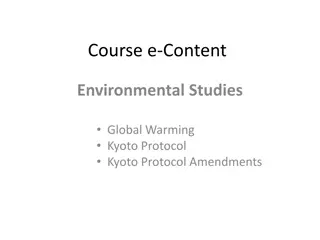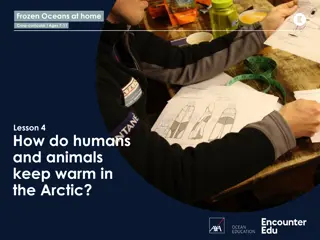Understanding Melting, Freezing, and Sublimation
Melting is the process of a substance changing from a solid to a liquid when heated, while freezing is the transition from a liquid to a solid when cooled. Sublimation involves the direct conversion of a solid into a gas. These phase transitions occur due to changes in temperature and energy distribution within the particles of the substance. Explore examples such as rocks turning into lava, metals melting, and water freezing to ice to better grasp these concepts.
Download Presentation

Please find below an Image/Link to download the presentation.
The content on the website is provided AS IS for your information and personal use only. It may not be sold, licensed, or shared on other websites without obtaining consent from the author. Download presentation by click this link. If you encounter any issues during the download, it is possible that the publisher has removed the file from their server.
E N D
Presentation Transcript
Lesson: (Melting, freezing and subliming)
Melting Melting is a process that results in the phase transition of a substance from a solid to a liquid. This occurs when the internal energy of the solid increases, typically by the application of heat , which increases the substance's temperature to the melting point. The melting point of a substance is the temperature at which it changes state from solid to liquid.
When the solid starts to melt until it has completely turned into a liquid its temperature doesn t rise. All the heat energy is used to separate the particles so they can flow over one another. When considered as the temperature of the reverse change from liquid to solid, it is referred to as the freezing point.
The particle theory When a solid is heated all the particles receive more energy and move more strongly and push each other a little further apart. If the solid is heated further, the energy makes the particles vibrate so strongly that they slide over each other and become a liquid. Heat
Examples of Solid to Liquid Rocks to lava - rocks in volcanos can be heated until they become molten lava. Metal to molten liquid - metals can be molten down and reforms into solid. Ice to water - ice returns to its water form after being left in temperatures above freezing
Freezing Freezing is a phase transition where a liquid turns into a solid when its temperature is lowered below its freezing point.
Other substances can freeze into solids at temperature much higher or lower than the freezing point of water. For example, when molten wax runs down the side of a candle it freezes and becomes a solid before it reaches the bottom.
Examples of Liquid to Solid Water to ice - when water becomes cold enough it freezes and turns to ice.
Sublimation Sublimation is the transition of a substance directly from the solid to the gas state, without passing through the liquid state. The reverse process of sublimation is deposition or desublimation, in which a substance passes directly from a gas to a solid phase.
Sublimation- desublimation Solid Gas Gas Solid
Examples of Solid to Gas Dry ice sublimation - carbon dioxide is called 'dry ice' and sublimates when at room temperature.


